Firms push high-tech solutions to fortify airport perimeters
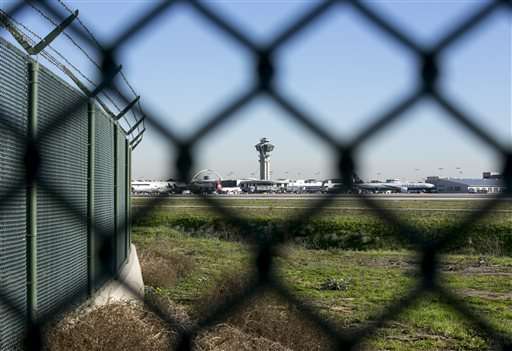
Technology firms increasingly pitch new sensors and software to U.S. airports as a way to bolster exterior security and keep intruders out, but such digital barriers come with a hefty price tag and don't always work.
An Associated Press investigation this week documented 268 instances in which people hopped over, crawled under, drove cars through or otherwise breached the fences and gates protecting the perimeters of 31 of the nation's busiest airports from January 2004 through January 2015.
How to address the problem is up for debate.
"There's a lot of things that can be done," said John Pistole, retired director of the Transportation Security Administration, who, like airport officials, argues the perimeters are secure and that breaches are rare. "The question is whether there's an appetite for paying for it."
Congressman Eric Swalwell, D-Calif., said the number of airport breaches over the past decade is cause for action and that new technologies should be installed on perimeters.
"Bringing down an airliner and killing innocent Americans remains our enemies' highest-value target. Porous airport perimeters are major vulnerabilities that terrorists could exploit," he said. "I'm continuing to call for airports to use technologies that would alert officials the moment a perimeter is breached."
While the TSA is responsible for screening passengers and baggage, airports are responsible for securing perimeters, typically with a mix of private security guards and airport police. Airports won't disclose specifics, but some measures are known: Fencing—typically a minimum of 6-feet high — surrounds U.S. airports, and it often is topped with barbed or razor wire. Additionally, security gates help restrict access to airfields.
Most major airports also use video cameras, and guards are supposed to patrol regularly—but staffing varies. At Los Angeles International, through which more than 32 million passengers travel each year, the police agency employs some 1,100 law enforcement and civilian personnel. Florida's Tampa airport, with about 8 million passengers a year, lists 173 employees in its police agency, 66 of them sworn officers.
Differences in the facilities themselves present other security challenges: Some are edged by water, others busy business districts. In Las Vegas, the rowdy Strip is nearby, and Philadelphia's main airport is adjacent to a road that's the scene of illegal drag racing.
Some facilities do go beyond the basics. Located near the Texas-Mexico border, McAllen-Miller International Airport installed optic fibers in its fences in 2009 over concerns about violence spilling across the Rio Grande. The technology, which also is used at U.S. nuclear facilities, can immediately detect an intrusion and send an alert, said Samuel Kassey, vice president of one supplier, LaseOptics Corp.
McAllen airport director Elizabeth Suarez said that despite some false alarms, the technology has worked well. She could not provide information about cost.
"I'd prefer to handle a false alarm with staff verifying that nothing has breached the perimeter than not having an alarm at all," said Suarez.
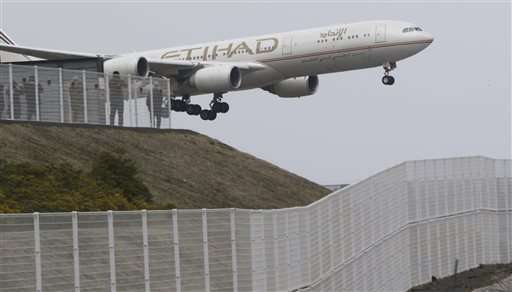
Thermal imaging firms claim several major U.S. airports as clients, though they won't name which. By detecting heat, thermal cameras can serve as a virtual trip wire and also improve nighttime visibility.
In 2006, the Port Authority of New York & New Jersey, which oversees John F. Kennedy International, Newark Liberty, LaGuardia and Teterboro airports, awarded Raytheon a $100-million contract for a much-touted "perimeter intrusion detection system."
The system includes motion-detection cameras, "smart-fence" sensors, night-vision cameras, perimeter alarms—even a power subsystem to bypass outages, according to Raytheon's promotional materials. The company promised a 95 percent detection rate of people, vehicles or watercraft.
The system has failed at least once, drawing fire from the police union that represents Port Authority police officers. In that 2012 incident, a man whose watercraft ran out of fuel swam to shore, climbed an 8-foot fence at Kennedy and crossed two runways undetected before asking an airline employee for help.
"We believe it's just not a proven technology," said Port Authority police union spokesman Bobby Egbert.
The Port Authority eliminated perimeter patrols by airport police cars when the technology came online, but then reinstated them in response to the criticism, said Egbert, adding that a lack of manpower remains a concern because there are gaps in the hours that police boats patrol around Kennedy and LaGuardia, both with waterfront runways.
Raytheon declined comment and referred queries to the Port Authority, which said the intrusion system is part of a layered security approach.
"The agency has invested significant resources in protecting its airport perimeters, exceeding TSA requirements," the authority said in an email to AP, adding that efforts include devices at entry points designed to stop vehicles and crash-resistant fencing.
The Port Authority declined to release a full accounting of perimeter breaches at the airports it oversees to the AP.
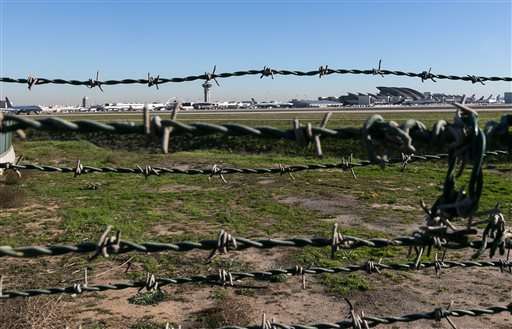
Patrick Gannon, chief of police at Los Angeles International Airport, which had 24 perimeter breaches since 2004, said that in addition to regular patrols, his agency has upgraded fencing to make it harder to scale.
The department also will test an electronic intrusion system within the next year, at a cost of about $1.5 million. But Gannon is not yet sold. Other chiefs report false alarms, such as a plastic bag blown against a fence, and Gannon said such systems may "create more work than they actually solve."
"I just want to make sure that we do it right, and I'm just not doing it to check a box," he said.
While airport security analysts predict that spending on physical perimeter barriers will decline in coming years, they said the market for high-tech solutions is on the rise. New breakthrough technologies are still being developed, as engineers in the Silicon Valley and beyond find new ways to sense and transmit data.
The biggest stumbling block may be money. An overhaul linking fences and video feeds to software systems would cost between "a few million to less than $10 million," said Chris Wooten, vice president of security at surveillance software provider NICE Systems.
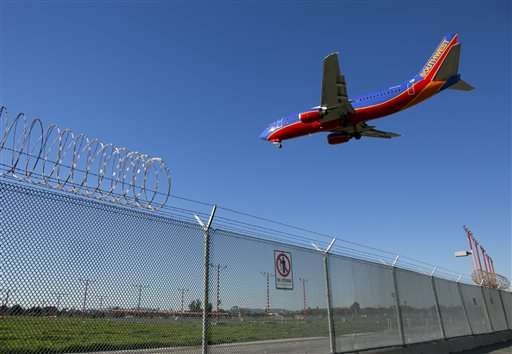
Expensive technology is used at several airports outside of the U.S., including two that say they've never seen a perimeter breach.
Narita International Airport near Tokyo is considered one of the world's most secure. Its perimeter is protected by vibration sensors, which immediately alert security if tripped. That's in addition double-fencing, video surveillance and patrols. The prison-like security was built in the late 1960s and early '70s amid clashes between police and militants supporting farmers who refused to yield their land for runway construction.
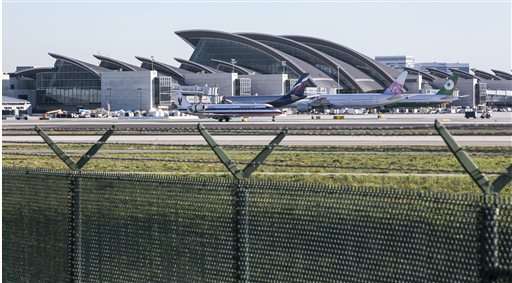
The other secure airport is Israel's Ben Gurion, which had a string of Palestinian attacks on planes in the 1970s. It runs a ground radar system between two electronic fences, with hundreds of sophisticated observation systems and hundreds of highly trained armed police and soldiers assigned strictly to the perimeter, said Shmuel Zakay, the airport's managing director, who said the cost totals more than $200 million annually.
"Of course, the terrorist organizations are always trying to do whatever they can to hit aircraft. For them it doesn't matter if it is with explosive material in a passenger's suitcase or by firing a machine gun or anti-tank missile at a plane," Zakay said. "This is why we pay such close attention to perimeter security."
-
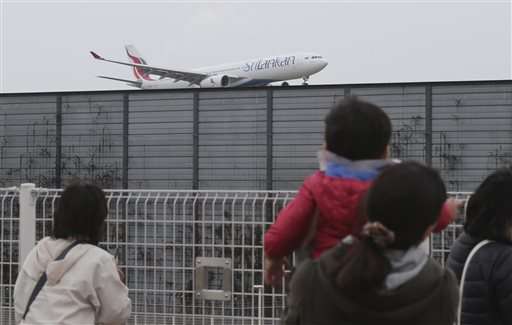
In this Saturday, Mach 14, 2015 photo, a high fence blocks the view of people enjoy watching a Sri Lankan Airlines' plane landing at the Narita International Airport from Shinonomenooka Park in Narita, east of Tokyo. The airport is surrounded by two fences, each 20 feet high with opaque metal wiring. There is an 1,100 person police force and alarms. The cost: About $3,000 a meter to build. (AP Photo/Koji Sasahara) -
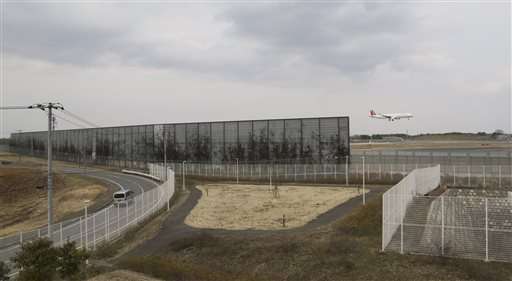
In this Saturday, Mach 14, 2015 photo, a car drives past high fences surrounding the Narita International Airport in Narita, east of Tokyo, as a Philippine Airlines' plane lands. The airport is surrounded by two fences, each 20 feet high with opaque metal wiring. There is an 1,100 person police force and alarms. The cost: About $3,000 a meter to build. (AP Photo/Koji Sasahara)
© 2015 The Associated Press. All rights reserved.


















